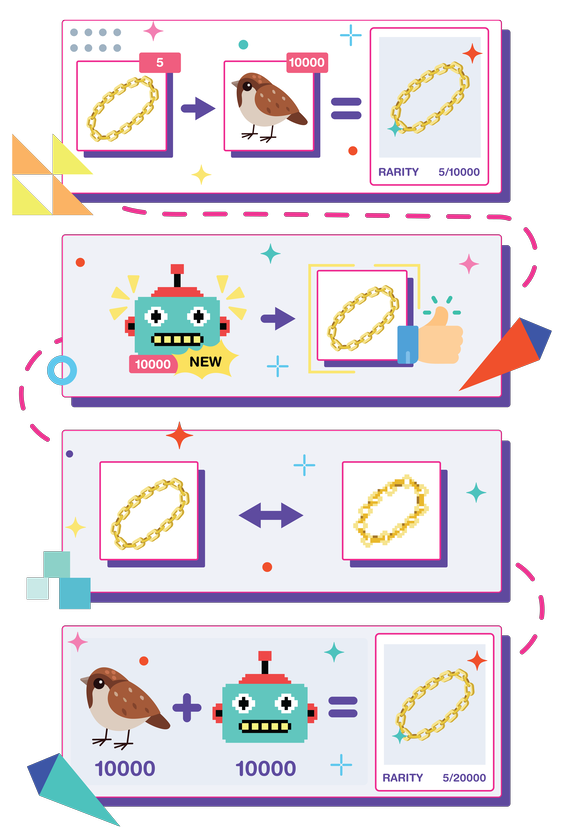Global Item Economy

Because all RMRK nestable and equippable NFTs are mutually compatible and can leverage multi assets to use different media and art styles for this cross-collection compatibility, the concept of a Global Item Economy (GIE) appears.
This also creates another concept: NFT DEGEN Score (Demand for Globally Equippable NFTs), or in other words, dynamic rarity.
Traditionally in other ecosystems, if you have a collection of 10000 Sparrows and 5 of them have a gold chain, then the rarity of the gold-chained Sparrow is 5/10000.
In RMRK, not only is this gold chain equippable onto all other Sparrows, but someone else can later launch a totally unrelated collection of Robots who are made compatible with this gold chain.
The gold chain NFTs would be given a new asset which visually matches the style of the robot project, and become equippable by the 10000 Robots.
Now, the rarity of the gold chain is no longer 5 / 10000, but 5 / 20000.

Therefore, the demand for this NFT went up, because it is now usable in twice as many other NFTs.
This does not have to stop at visual accessories. As noted in equippables:
A song NFT could have as an asset a music base with a fixed beat, but slots for vocals, drums, synth, effect, even a slot for a visualization - perhaps even for some runnable p5.js code.
Not only is this really cool in the context of paying royalties to anyone who contributed to a song's creation with their own stem, but we can take it further: the song itself, or maybe just a single stem can be made equippable on the catalog asset of a metaverse land.
That way, whoever enters this land gets it played as a soundtrack of the area, background music. The music is thus compatible not just with its own project, or the issuer's associated projects, but with any project that can be launched on RMRK standards.
The DEGEN score of the music tracks goes up by a lot, purely because they have been made compatible with tens of thousands of virtual real estate plots.